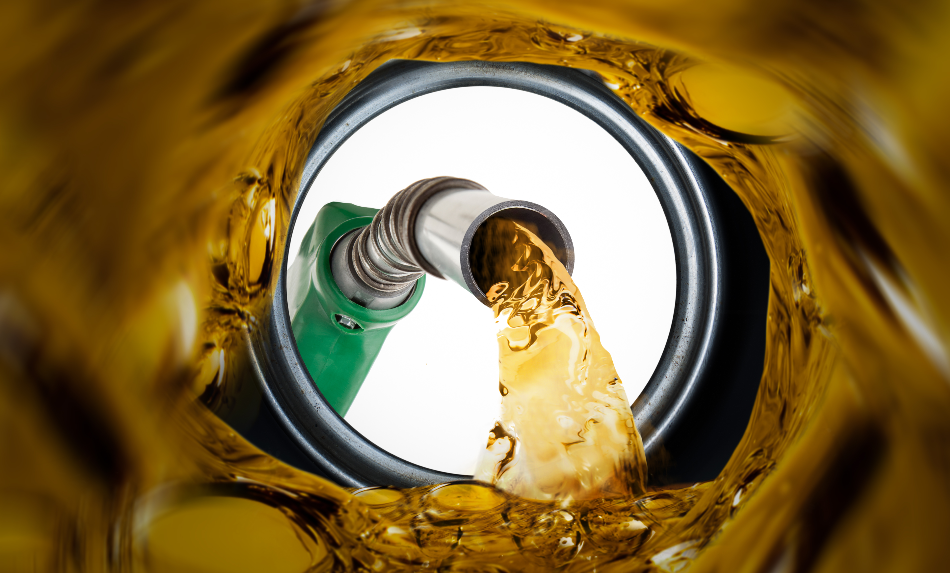
nexus 7 / Shutterstock
Scientists at the University of Liverpool have innovated a way to efficiently produce clean fuel for use in industry by using a laser spectroscopy method. The work is expected to help develop new clean energy technologies that would be viable for use in industry, helping facilitate the switch from fossil fuels.
Replacing Fossil Fuels Key for Global Industry
Industry is responsible for the consumption of vast amounts of fuel worldwide, each year. In 2012, the global industrial sector used around 222 quadrillion British thermal units (Btu) of energy, which is expected to increase to 309 quadrillion Btu by 2040. Given that total energy consumption worldwide equated to around 572.8 quadrillion Btu in 2016, it’s clear that the industrial sector contributes to a large portion of total energy consumption.
With fossil fuels becoming depleted, and the impact of emissions becoming ever more evident, all industries are needing to both find ways to power their operations more efficiently and to innovate ways to incorporate renewable, clean energy sources.
From Carbon Dioxide to Carbon Monoxide
Carbon dioxide (CO2) is a major contributor to global warming, absorbing infrared radiation and emitting it back towards the earth. Unfortunately, CO2 is a common waste product of numerous processes, meaning that CO2 is abundant in the atmosphere.
A team of researchers at the University of Liverpool have found a way to address the problem of the increasing volume of this greenhouse gas in our atmosphere while producing a fuel that can be used industrially by converting it to carbon monoxide.
The issue is the current process of converting carbon dioxide into carbon monoxide isn’t efficient enough to be used at the industrial scale. However, electrocatalysts have shown potential in being able to support the efficient conversion, there is a gap in knowledge as to how these catalysts work and therefore without the key information on their mechanisms, scientists have yet been able to create a process that can be used on the global, industrial scale.
Researchers at the University of Liverpool, in partnership with teams at Beijing Computational Science Research Center and STFC Rutherford Appleton Laboratory, have used Vibrational Sum-Frequency Generation (VSFG) spectroscopy to study the electrochemical reduction of CO2 in-situ. The work has generated a far deeper understanding of the chemical pathways involved in the reaction. The work focused on the Mn(bpy)(CO)3Br which has shown great potential for catalyzing CO2 reduction.
Using Lasers to Understand CO2 Reduction
VSFG spectroscopy is a nonlinear laser spectroscopy technique that uses lasers to measure the electronic and vibrational dynamics of surfaces. The technique was used by the Liverpool team because of its ability to take measurements in situ (which is suitable for measuring surfaces of gases) and because it can provide data rapidly and in real-time. In this case, researchers used this method to measure the chemical bonds of the atoms and molecules, gaining a deeper understanding of the mechanisms of catalysis of CO2 reduction.
Using this method, researchers uncovered for the first time, the unique intermediates that briefly present themselves at the electrode surface. Before this, differentiating between short-lived intermediate molecules at the electrode surface and the inactive molecules within the solution had proven challenging. With VSFG, the Liverpool team has shown that it is possible to observe the behavior of very short-lived intermediate molecules in the catalytic cycle, providing the important next step to developing a method of converting CO2 into clean industrial fuel technologies.
The team is continuing to work on the project and is aiming to improve on the technique’s sensitivity by reducing the signal-to-noise ratio. We can expect the laser technique used by the researchers at the University of Liverpool to be fundamental in the development of new methods for obtaining carbon monoxide from CO2 for use as an industrial fuel.
Source
Disclaimer: The views expressed here are those of the author expressed in their private capacity and do not necessarily represent the views of AZoM.com Limited T/A AZoNetwork the owner and operator of this website. This disclaimer forms part of the Terms and conditions of use of this website.